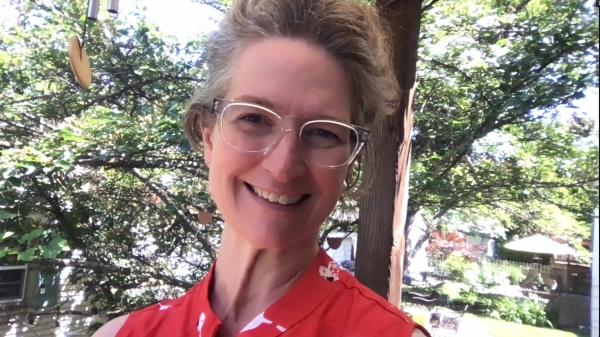
The 2024 Google Search Algorithm Leak: What You Need to Know

10 Discoveries Nonprofits and Associations Can Use to Improve Search Rankings
On May 27th of this year, venerable SEO expert Rand Fishkin published a blog for SparkToro. The subject of the blog seemed extraordinary: thousands of internal Google Search API documents had been shared with Rand by an anonymous source to hold Google accountable for “public statements that conflict with private conversations” and “to bring greater transparency to the field of search marketing”.
First, Some Acknowledgements
Of course, it’s important to acknowledge Rand Fishkin’s own reporting for SparkToro, as without his dedication to the craft no one would know any information about the Google algorithm leak in 2024. Ironically, Rand had been theorizing about many of the things revealed to be true as part of this leak months and even years before, so we highly recommend checking out his work.
Another resource to highlight that was crucial to our findings was the excellent technical breakdown by Mike King for iPullRank. Mike does a great job explaining these concepts in an easily understandable way so check out his article and iPullRank’s offerings.
In this blog, here are the ten things non-profit associations should know:
#1 - Keep Your Dates in Check
Google highly values and actively promotes fresh, relevant content. One of the key ways Search determines this is via the dates on your site's content.
For all applicable content such as blogs, events, or content that changes frequently, ensure that a “last updated” date is visible near the top of the page and that the date information in your page’s metadata and XML sitemap matches what is output to end users. Mismatched dates may confuse Search or cause the algorithm to think your content is improperly managed.
#2 - Important Content to the Front, Please
Long believed to be true by SEO experts and now confirmed by the Google algorithm leak in 2024, you should place the most important parts of your content as high up on a given page as possible. Many news and personal blogs have had great success hosting an “Article Summary” or “Takeaway” section at the very top of their pages that summarizes the content further down the page. Given that Search indexes pages from top to bottom, any content with specific keywords you’re targeting should make its way to the top of the page as well.
#3 - Keywords in the Front, Context in the Back
Similar to the previous point above, your page titles should be formatted in a way that places the keyword you’re targeting at the very front, with context for those keywords following. The title of this very blog post is a great example. We’re targeting folks searching for information on the Google search algorithm leak and what they should know, hence “Google Search Algorithm Leak - What You Need to Know”.
#4 - Update, Update, and Update Again
Search indexes up to twenty versions of the pages on your site and references those versions when determining the ranking for your content. This means if a piece of content is given a significant update, it may take up to 19 additional updates to the page for Google to “forget” the old version of the page and properly index the page as it exists. This highly suggests you should make content updates in “stages”. If you’re looking to refresh old content, perhaps start by swapping out images and then updating the content itself.
#5 - Authors Are People, Too!
Search can build a sort of “repertoire” of all of the content an individual publishes on the web to determine what that specific author is an expert on or what their niche is, and then rank content by that author higher than similar content with no author or a generic author (such as “Company Staff” for example).
On applicable content such as blogs, you want to promote the author near the top of the page, give a small snippet about what they’re an expert in, and link to any relevant resources for that author, such as their LinkedIn. You’ll also want author information to live within the page metadata and ensure that it matches as closely as possible to what is output on the page itself.
#6 - “Toxic” Backlinks Are Real
Long debated within the SEO landscape is the idea of “toxic” backlinks—spammy or otherwise undesirable domains linking to your site—and how they could affect your site’s SEO. The Google search algorithm leak documentation reveals that Google’s Search algorithms are absolutely keeping tabs on this and that you do not want to end up on this list, as it appears to be incredibly hard (and maybe impossible!) to get off of it.
We don’t know yet how Google determines these toxic backlinks, but to avoid ending up as one, you’ll want to make sure you’re keeping your site secure and up-to-date with routine maintenance to avoid any potentially damaging vulnerabilities or hacks impacting your web presence long-term. You should also regularly audit your backlinks using either a free tool like Google Search Console or a paid SEO tool like SEMRush.
#7 - Google Algorithm Leak Confirms Clicks Are Not Enough
Google factors click volume for your site into its ranking. This was assumed by most SEO experts for a while now, but it's nice to put the “just write good content!” advice to bed.
However, also revealed in this Google algorithm leak from 2024 is that simple click volume is not enough. Google has different categories for the types of sessions generated by clicks from the SERP—bad clicks, good clicks, etc. The most valued click of them all is the “long click”—a click that results in a session where the user does not return to Google after clicking on a page.
You should use this information to catalog which of your pages are most and least likely to result in these “long clicks”. Google Analytics 4 provides metrics for each page on things like average session duration, engagement rate, and bounce rate. Pages low in these metrics likely could use a refresh, and pages high in these metrics are probably good examples for any pages needing work.
#8 - Google’s Got Gold Guidelines
Search can apply a “golden” status to pages, likely meaning they are model pages in terms of providing information to Google and are formatted the way Google would prefer all content on the web to be. Although there's no way to see which pages on the web are marked as “golden”, folks have theorized this is likely closely related to Google’s guidelines on “helpful, reliable, people-first” content.
This, admittedly, is a very long list of questions for your organization to evaluate for every piece of content on your site. There are tools out there that aim to automate this process, such as this AI-powered Content Evaluation with ChatGPT tool, but be sure to consider the sensitivity of the content you’re sharing with said tools.
#9 - Search Is Not Just Content-Driven
The Google search algorithm leak revealed what Google calls Nav Demotion, which Mike King asserts in his article is likely a ding that “gets applied to your site’s rankings if its pages are exhibiting poor navigation practices or user experience issues”.
This highlights an important point to consider when conducting search engine optimization. While these tips may benefit your SERP ranking, they shouldn’t come at the expense of your site’s user experience. Make sure to balance the impact of any update you’re making from both an SEO and a UX perspective—especially since Google appears to be doing the same!
#10 - The Small Guy’s Gotta Be Scrappy
Google’s Search algorithms can identify and then “tag” a site as a “small personal site”. Nobody can say with complete certainty what Google does with this information, but folks have theorized that this indicates SEO is largely a big brand’s game. For example, a small soda company may not have a fighting chance against the domains of giants like Coca-Cola and Pepsi.
However, armed with this information, small sites and organizations are more empowered than ever to exploit these findings and optimize their websites.
If you need SEO or analytics assistance or want to learn more about the Google algorithm leak, we’d love to help! Drop us a message so we can get to know you and your needs.




